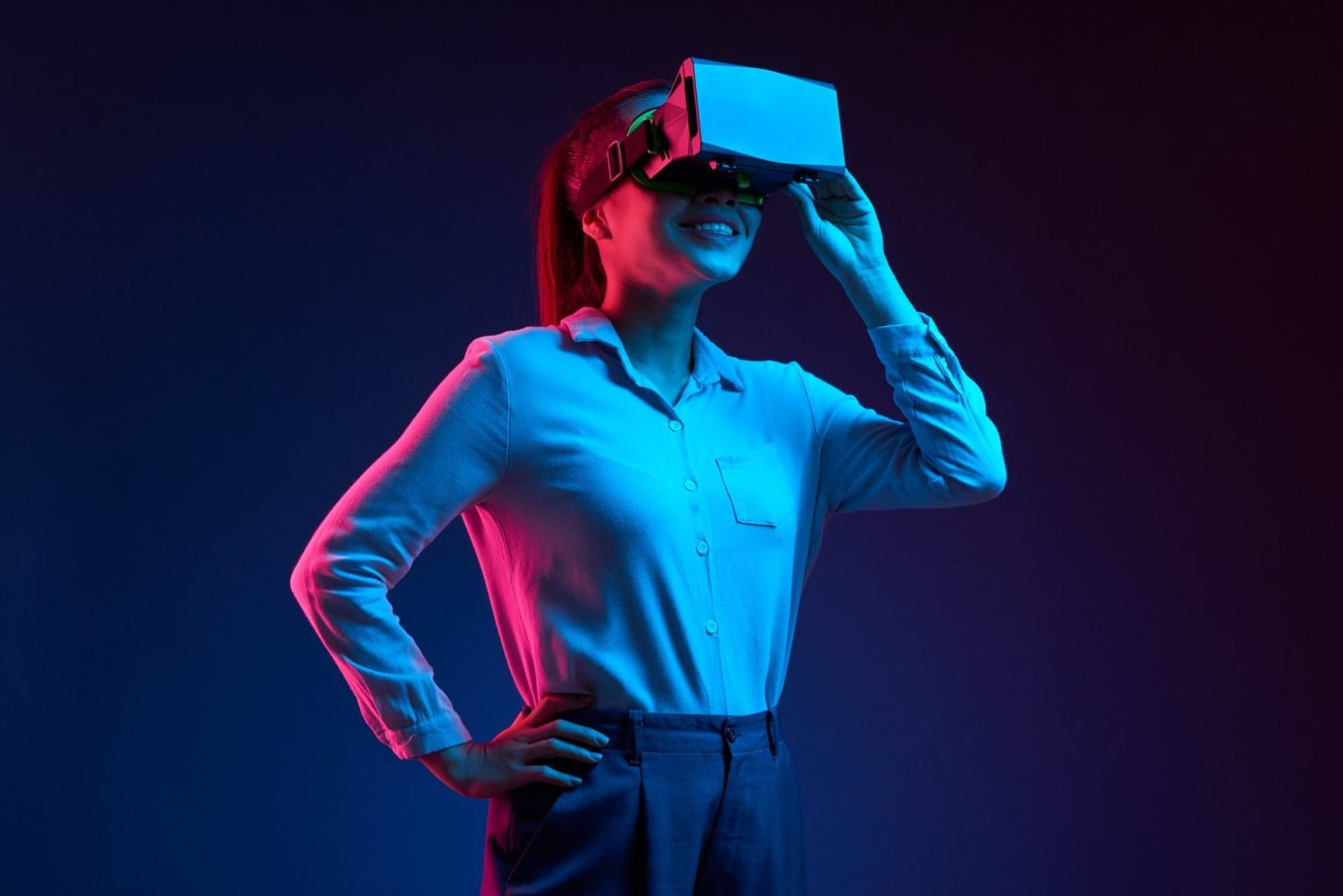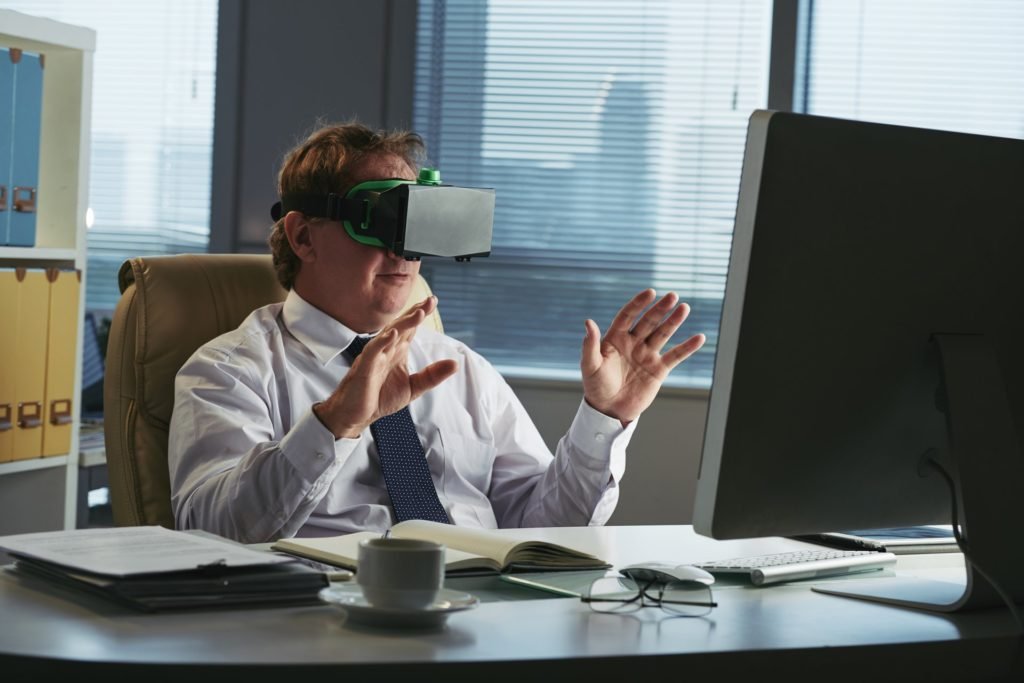News
8 Mar 2022
What The Hell Is The Metaverse?

Subscribe to CX E-News
And will it impact event production?
Thinking of shifting your event into the Metaverse? It might be better to wait.
2021 was the year that the buzzword “Metaverse” entered the public consciousness. In October, Mark Zuckerberg announced that Facebook would rebrand as a social technology company called Meta, signalling the tech giant’s vision of the Metaverse as the future of the internet.
What is the Metaverse?
Many elements of the Metaverse already exist. In practice, it allows users to interact with others in a virtual world, enabled by virtual reality (VR), extended reality (XR) or augmented reality (AR). This could involve the use of 3D holographic avatars both photorealistic and fantastic. Social experiences will either take place in an immersive 3D world or will be projected into the real world.
Sounds familiar? If you’re a fan of Ernest Cline, you will already have made the connection between the Metaverse and OASIS, the virtual universe in Ready Player One that users access with a VR headset, wired gloves, and a body suit.
The Metaverse is going to happen. Zuckerberg hopes that one billion people will join Meta by the end of the decade, and backed this hope with a $10 billion investment last year. However, the company isn’t aiming for total domination of the virtual world, calling the Metaverse “a collective project that goes beyond a single company … created by people all over the world, and open to everyone.”
(Everyone who can afford a VR headset, that is. But we’ll get to that in a minute.)

Metaverse Applications
Practical applications of the metaverse range from online gaming (think Fortnite, Minecraft, and Roblox), online learning such as university lectures, sports events, alternative worlds (Second Life, Earth 2.0, Nowhere), and virtual concerts such as Fortnite’s Rift Tour featuring Arianna Grande. For the corporate world, Mesh for Microsoft means you can join a Microsoft Teams meeting as an avatar, while Accenture has built a virtual office known as the Nth Floor.
And, of course, any meeting place in the Metaverse has the potential to be used for a virtual conference venue.
Benefits
There’s plenty of cool stuff that’s possible when you move an event into an immersive virtual world. For example:
1. Extraordinary environments
If you’re going to move your audience into a virtual world, an inside-the-box approach would be to create a virtual space that looks exactly like an existing conference venue. I would be disappointed, for example, if I put on a VR headset only to find myself transported into what looks like a digital rendering of the Melbourne Convention and Exhibition Centre. Accenture’s digital workplace looks just like any city office you’ve ever visited, complete with desks, meeting rooms, a cafeteria, and so on.
Fortnite developer Epic Games gets it. Arianna Grande’s virtual concert could have taken place on a virtual stage with a few special effects thrown in; simply shifting what has always been done into an online environment. But the designers went to the other extreme, with Arianna performing in space, flying through the clouds, floating in a giant bubble, and dancing on a magical icy landscape.
Companies like Nowhere use VFX artists to create extraordinary worlds. Attendees’ faces are projected in floating hexagons that look a bit like the Phantom Zone from the 1978 Superman movie, but it’s the virtual environments that really make an impression.
Attendees can meet on a floating platform in the clouds, in a jungle, under the sea, or on the surface of another planet. This could be highly effective (if a little distracting) in terms of theming; a marine insurance conference, for example, could take place on the deck of a virtual cargo ship. I can imagine Elon Musk meeting with investors in a virtual rendering of a future Martian colony.
2. Be “in” the presentation
The Metaverse can take screen-sharing to a whole new level by allowing the audience to be “in” the presentation, with the subject under discussion projected all around them. For example, a property developer could invite their audience to take a walk through a virtual construction site or through a virtual rendering of a completed residential tower.
Anything is possible, but again, it will take some new thinking to shift from simply doing what we have always done in a virtual environment. Accenture (again) misses an opportunity to change the game; their video opens with a bunch of avatars standing around looking at some information presented on a virtual screen. This information could have been shared in much more creative ways.
3. Unlimited attendance
Travis Scott’s Astronomical concert hosted by Fortnite drew more than 45 million viewers. However, the vast amounts of data that would be needed to see and interact with this many people is simply unavailable today, which is why attendees were only able to see each other in groups of 50. However, we can expect this to improve as data transfer speeds inevitably get faster.
4. Monetisation
In Ready Player One, the main character spends the money he earns in OASIS on fuel for his virtual DeLorean, and pimps his avatar out with upgrades to his weapons and clothing. He also makes real-world purchases, too; an upgraded VR headset and haptic suit.
There are plenty of ways to make money in the Metaverse. People are buying and selling virtual real estate, companies are plastering virtual cityscapes with their virtual logos, people can buy virtual Louis Vuitton and Gucci clothing. Managers of a Metaverse event can consider selling advertising space, branded clothing, or offering an enhanced attendee experience for a higher price.

Limitations
At present, the Metaverse has several limitations; some of which may be ironed out as the technology matures and becomes more prevalent.
1. Hardware access and costs
At present, the full Metaverse experience is limited to users who own the right hardware, such as VR headsets. Companies that can afford it may one day supply every team member with the hardware required (as they currently do with company laptops), but there are few IT procurement managers who would fail to wince at the expense involved.
Perhaps, as headsets become a standard household item, organisations will take a BYO headset approach, much as they do with mobile phones. Either way, it is clear that a gap will emerge between those who can afford to access the Metaverse and those who cannot. People without headsets may be able to access events via a “flat” computer screen but will miss out on the immersive experience which is the whole point of the Metaverse.
There’s also the inconvenience of having to purchase a separate piece of kit, store it, and put the gear on whenever you need to access the Metaverse.
My prediction is that when we reach the point that the average person’s reading glasses are AR-enabled, the Metaverse will really become mainstream.
2. Platform interoperability
While Meta (previously Facebook) pointed out that the Metaverse goes beyond a single company, this suggests that users are going to struggle with interoperability challenges. At present, there is no standard for the Metaverse, meaning we can expect hardware and software mismatches until a standard emerges.
3. Data speeds and group sizes
The Travis Scott experience reveals the problem with Metaverse group sizes. Although 45 million attendees is impressive, no one had the opportunity to experience what it’s like to be in such a massive (virtual) crowd.
Conference organisers will often use attendee numbers as a selling point to attract more attendees and sponsors. However, if you were to join a conference in the Metaverse with 400 attendees but could only “see” and interact with 50 of them, this would detract from your ability to meet and network with others.
4. More screen time
Critics of the Metaverse argue that in a post-COVID world, what we really need is more in-person connection rather than more digital communication. Even if remote work is here to stay, conferences can provide a much-needed opportunity for face-to-face, human connection.
5 things to wait for before taking the plunge into the Metaverse
Before your organisation invests heavily in metaverse event production, consider waiting for the following things to happen:
1. VR/AR/XR gear costs need to come down.
2. Companies need to start providing and maintaining VR/AR/XR gear to staff, as they currently do with laptops.
3. A metaverse standard needs to emerge to iron out interoperability problems.
4. Key players and platforms in the metaverse will emerge, just as Zoom and MS Teams emerged as the top videoconferencing platforms.
5. Metaverse environments should be as readily available as PowerPoint templates.

Subscribe
Published monthly since 1991, our famous AV industry magazine is free for download or pay for print. Subscribers also receive CX News, our free weekly email with the latest industry news and jobs.




